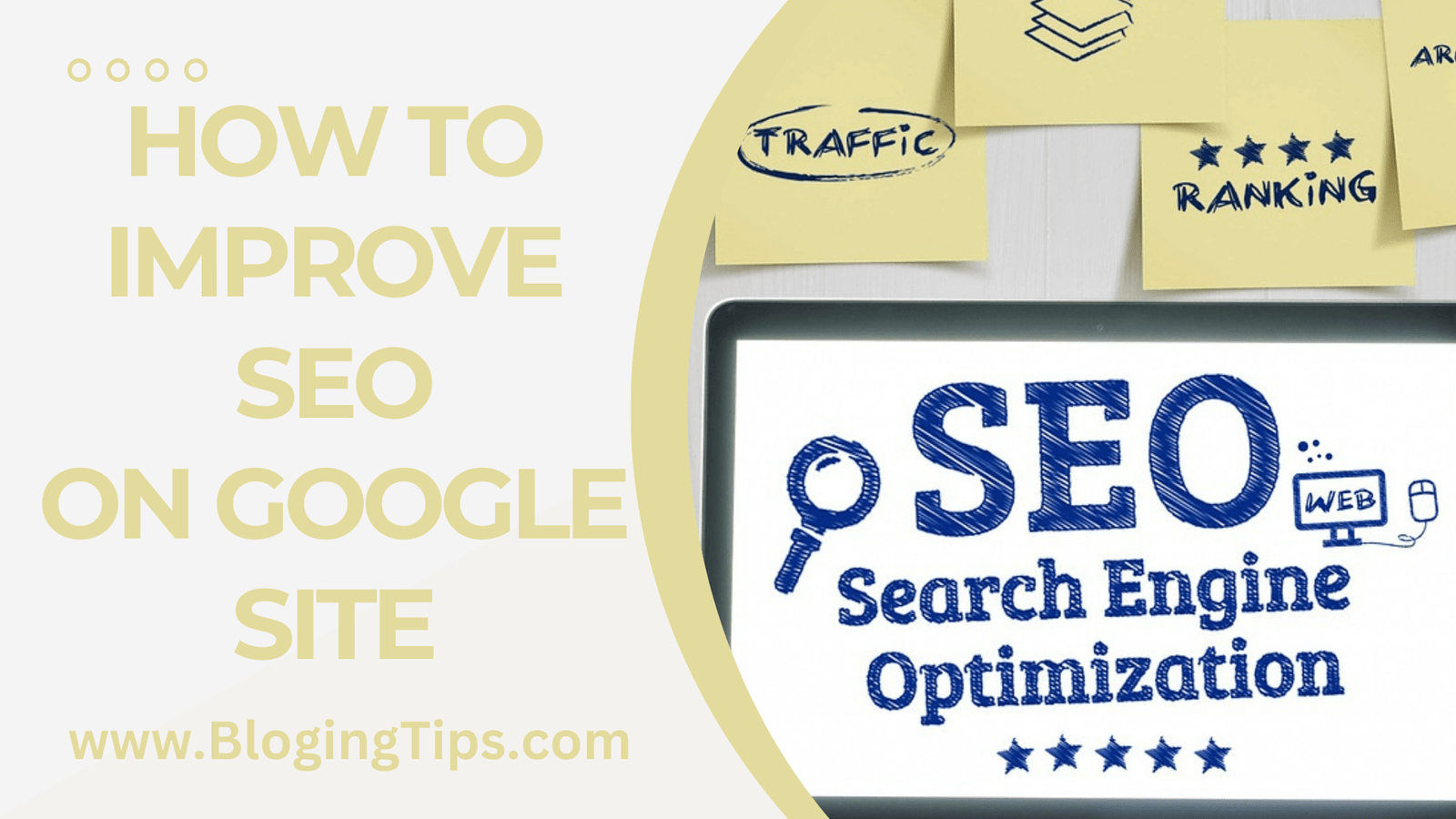How to improve seo on google site; At the forefront of today’s digital era. Having a strong online presence is critical for businesses and individuals alike. From running small businesses to personal brands or portfolios. SEO plays an essential role in ranking well on search engine results pages (SERPs). One popular platform for building websites is Google Sites – a free and user-friendly tool which enables quick creation and publishing. In this comprehensive guide we’ll examine how you can optimize Google Sites for improved SEO performance.
Understanding SEO on Google Sites

Before diving into specific strategies to increase SEO on Google Sites. It’s essential to grasp the fundamentals of search engine optimization (SEO). SEO involves increasing website visibility and rank in search results pages by optimizing it with various tactics – in this instance on Google Sites there are multiple factors which affect its performance on search engines, including:
Content Quality:
Google prioritizes high-quality, relevant content that adds value for its users. Make sure your Google Site contains well-written, informative articles that address the needs and interests of its target audience.
Keywords:
Keywords are words or phrases people type into search engines when seeking information. Conduct keyword research to understand which terms your audience is searching for. Then incorporate these into the content, titles, headings, and meta descriptions on your website.
Structure of Your Site:

A well-structured site structure makes it easier for both users and search engines to navigate your site. By providing clear navigation menus, logical page hierarchies. Descriptive URLs that make the user experience better and make indexing faster for search engines.
Mobile-Friendliness:
Now that most internet traffic comes from mobile devices. Google prioritizes websites which are optimized for use on these devices by employing responsive designs that adapt to different screen sizes. Make sure your Google Site meets this criteria by employing responsive designs which adapt as mobile visitors come through your pages.
Page Speed:

Google ranks site speed as an essential ranking factor. Optimize your Google Site for faster loading times by minimizing image sizes. Decreasing server response times and using caching techniques to store static resources.
Now that you understand the fundamentals of SEO on Google Sites. Let’s discuss some strategies you can employ to increase search engine visibility through optimization:
Optimize Page Titles and Descriptions:
Craft keyword-rich titles and meta descriptions for every page on your Google Site to increase click through rates from search engines and influence whether users choose your site as their destination. These elements appear in search results and could influence whether visitors click through.
Strive to Create High-Quality Content:
Make sure that your target audience needs are being met by providing valuable, relevant content that meets them. Use headings, bullet points, and images to break up and make the text more readable.
Optimize Images:
For best results, utilize descriptive filenames and alt tags when uploading images, to help search engines understand their content. Furthermore, compressing files reduces file sizes while speeding up page loading times.
Build Quality Backlinks:
Backlinks from authoritative websites are an effective way to demonstrate your expertise and relevance to search engines. Reach out to other website owners within your niche and request that they link back to your Google Site.
Promote Social Sharing:
Encourage visitors to share your content via popular social media platforms like Facebook, Twitter and LinkedIn – this can have a direct positive effect on SEO by raising visibility and driving traffic to your site.
Monitor Performance:

Utilize tools such as Google Analytics and Search Console to keep tabs on your site’s performance over time, tracking key metrics like organic traffic, bounce rate and average session duration in order to identify areas for improvement.
By employing these strategies, you can boost the SEO performance of your Google Site and increase its presence in search engine results.
Conclusion
Optimization of Google Site for Search Engine Optimisation involves applying technical knowledge, material production skills and constant improvement measures. By following the advice and strategies in this guide, you will increase site visibility while drawing more organic search traffic directly through search engines.
Thanks for Reading this article for more information please visit. www.blogingtips.com
FAQs
Am I able to edit the HTML on pages on my Google Site in order to improve SEO?
Unfortunately, Google Sites doesn’t give access to its core HTML code, limiting customization options; however material optimization tools provide access for easier SEO optimization of descriptions and titles in Google Sites.
How soon can SEO improvements for Google Sites take effect?
SEO can take time; significant gains could take weeks or months before becoming visible in rankings. Be patient as improvements take shape over time. Monitor its progress regularly!
Are There SEO Extensions/Plugins Avaliable for Google Sites?
Unfortunately not. As opposed to WordPress, which supports third-party plugins or extensions, Google Sites doesn’t permit third party extensions on websites hosted within its platform; however you could utilize tools like Google Analytics and Search Console in order to monitor and assess site performance.
Do I have to submit the details of my Google Site in order for search engines like Google and Bing to index it?
Google will index new websites automatically; therefore there’s no need for you to manually submit them yourself; however Google Search Console allows for manual indexing requests on specific pages as required.
How can I ensure my Google Site stays current with fresh material in order to enhance SEO?
Incorporating new blog articles or product updates regularly in order to maintain relevance is one way of staying organised, while developing an editorial calendar is another.



